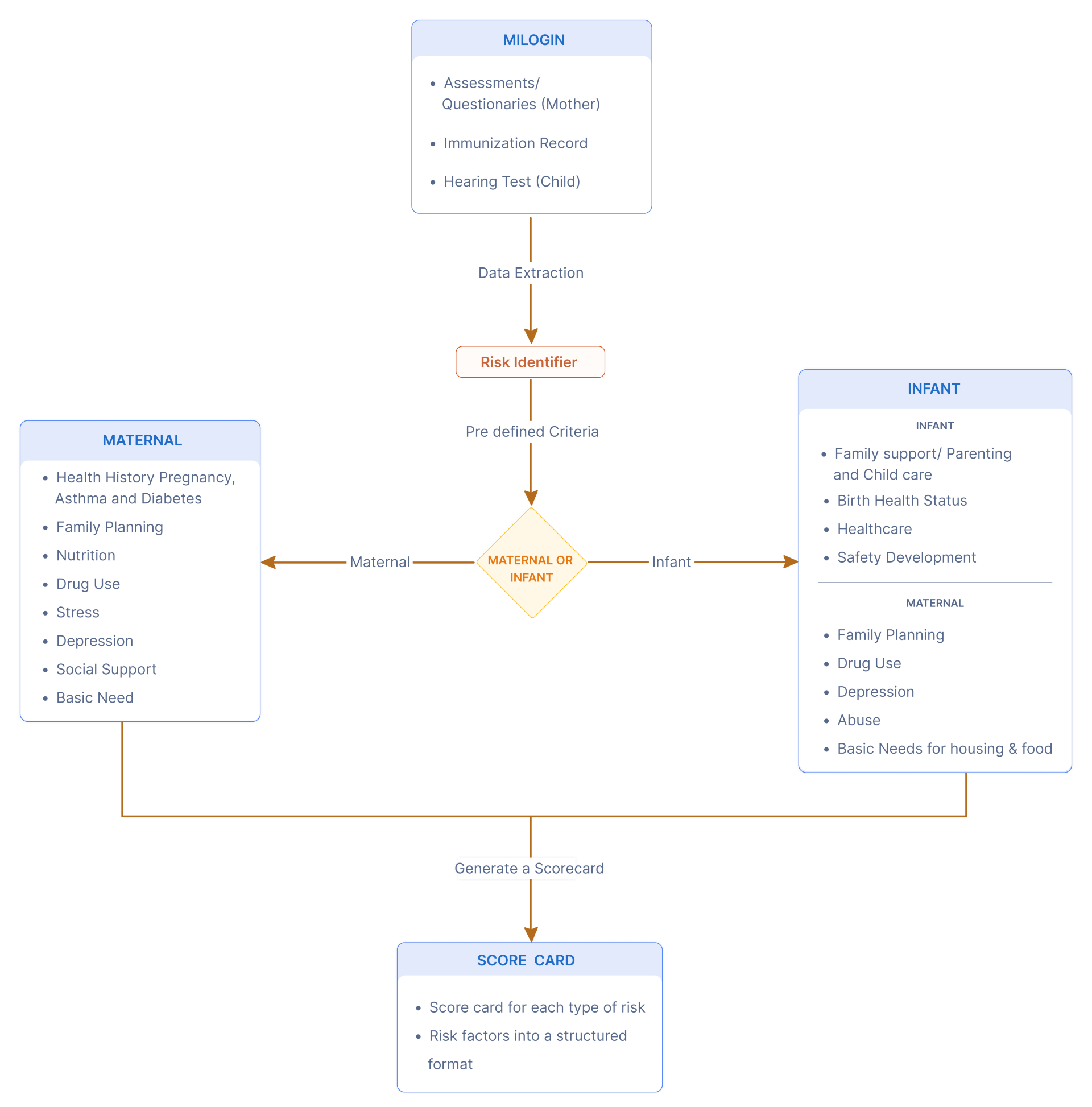Overview
The client is a leading provider of maternal and infant health services in the United States, specializing in supporting mothers and infants through various stages of pregnancy, childbirth, and early childhood development. Committed to delivering high-quality care and support to families, the client operates within the Maternal Infant Health Program (MIHP) framework. Facing challenges with their existing MIHP EMR system, the client reached out to us seeking to build their own EMR solution with enhancements to their core MIHP features and modules.
Business challenges
The client was facing several challenges with their existing MIHP EMR system, which hindered their ability to deliver optimal care and support to their clients:
1. Limited Functionality:
The existing EMR system lacked features for creating detailed client and patient profiles, which restricted the capture of all essential demographics, health data, and documents.
2. Slow System Performance:
The outdated EMR system caused frustrations and inefficiencies for healthcare providers and administrative staff due to its slow loading speed and performance issues.
3. Limited Customization:
The existing EMR system also lacked flexibility and customization options, making it difficult for the client to tailor patient charts and documentation to meet their specific needs and preferences.
4. Telehealth Integration:
With the growing demand for telehealth services, the client recognized the need to incorporate telehealth capabilities into their EMR system to facilitate virtual visits and enhance accessibility for patients.

Solution
We developed a modern and robust EMR system specifically designed for maternal and infant health services. The new system incorporated advanced features and functionalities to streamline data management, enhance user experience, and improve overall performance. Here's how it addressed the client's challenges:
1. Automated Risk Assessment & Scoring:
-
Data Collection and Processing:
We developed algorithms and data processing pipelines to collect, process, and analyze data from initial assessments/questionnaires. This involves using machine learning models or rule-based engines to identify maternal and infant health risks based on predefined criteria.
-
Scorecard Generation:
Based on the derived risk identifiers, we implemented logic to generate a scorecard for each type of risk. This involved aggregating and summarizing risk factors into a structured format, enabling healthcare providers to prioritize interventions and support accordingly.
2. Patient Charting Module:
-
Customization Options:
We developed a user-friendly interface for the Patient Charting module, allowing healthcare providers to customize patient charts and documentation templates according to their specific needs and preferences. This includes features such as drag-and-drop functionality, customizable fields, and predefined templates for common encounters.
-
Contact Log Updates:
Within the Patient Charting module, we implemented functionality for updating contact logs, enabling healthcare providers to document communication and interactions with patients effectively. This ensures comprehensive documentation of patient encounters and supports continuity of care.
3. Telehealth Integration:
-
Video Conferencing Implementation:
We integrated video conferencing capabilities into the EMR system using secure and HIPAA-compliant communication protocols. This involves leveraging APIs provided by telehealth platforms or developing custom video conferencing solutions tailored to the client's requirements.
-
Progress Note Documentation:
We implemented functionality for healthcare providers to document progress notes directly within the EMR system during the telehealth consultation sessions.
-
Secure Communication:
We implemented encryption and security measures to ensure secure communication between healthcare providers and patients during telehealth sessions. These measures include data encryption, user authentication, and access controls to protect patient privacy and confidentiality.
Overall, the technical implementation of the proposed solution combines modern technologies, advanced algorithms, and secure communication protocols to deliver a comprehensive EMR system tailored to the unique needs of the client's Maternal Infant Health Program.
Value Delivered
-
Enhanced Clinical Efficiency:
Streamlined workflows, faster data entry, and improved access to patient information allow healthcare providers to focus on delivering quality care.
-
Data-Driven Decision Making:
Automated risk assessments and scoring provide valuable insights to support proactive care interventions and improve health outcomes.
-
Improved Compliance:
Secure data storage and user access controls to ensure compliance with HIPAA regulations.
-
Improved Patient Engagement:
Telehealth integration and secure messaging tools facilitate convenient and accessible patient care.
-
Increased Productivity:
Faster loading times and a user-friendly interface enhance efficiency and reduce administrative burden.
